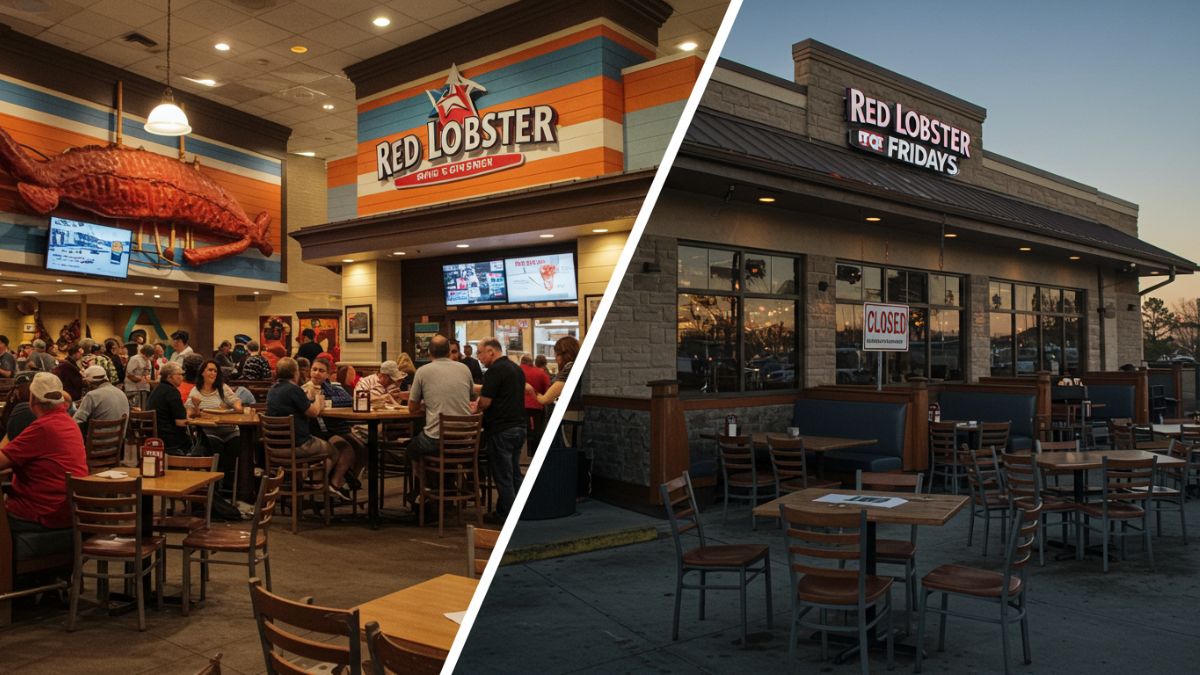The announcement of Red Lobster TGI Fridays closing several locations across the United States has stirred concern among loyal customers and industry watchers. These two restaurant giants have been iconic symbols of American casual dining for decades. Their decision to shut down select branches has raised one big question: What’s happening to the casual dining scene?
In this article, we explore the real reasons behind the closures, the challenges facing both brands, and what this means for the future of dining out in America.
A Shift in the Casual Dining Landscape
The Red Lobster TGI Fridays closing trend is not an isolated event. It’s part of a larger transformation in how Americans choose to dine. The casual dining model that thrived for decades—sit-down meals, affordable prices, and family-friendly atmospheres—is now facing stiff competition from fast-casual and delivery-based alternatives.
Chains like Chipotle, Panera Bread, and even ghost kitchens are reshaping consumer expectations. Customers now value convenience, speed, and tech-integrated services—traits many traditional chains are struggling to adopt quickly.
What’s Behind the Red Lobsters TGI Fridays Closing Movement?
1. Decline in Foot Traffic
Post-pandemic behavior has shifted drastically. People are dining out less, and when they do, they want quicker experiences. Many Red Lobster and TGI Fridays locations are located in shopping centers or suburban areas where foot traffic has declined. Some areas simply no longer generate the volume needed to keep locations profitable.
2. Rising Operating Costs
Both chains are feeling the heat from increased food costs, higher employee wages, and utility bills. Red Lobster, known for its seafood-heavy menu, is especially vulnerable to fluctuating seafood prices. TGI Fridays also faces challenges with sourcing and staffing. These costs eat into profit margins, prompting management to cut back by closing underperforming branches.
3. Increased Competition
In the past, Red Lobster and TGI Fridays had limited competition in the casual space. Today, they compete with local bistros, health-conscious cafes, delivery apps, and modern fast-casual restaurants that offer better customization and affordability.
How Many Locations Are Actually Closing?
In 2024 and continuing into 2025, Red Lobster has closed over 80 locations in states like Florida, California, and New York. TGI Fridays has followed suit, closing approximately 36 outlets in areas where sales could not justify operational costs.
Despite rumors, Red Lobster TGI Fridays closing does not mean the brands are vanishing. Both companies have clarified that they are focusing on core, high-performing locations while also exploring new strategies for future sustainability.
What Customers Are Saying
Regular customers have taken to social media to express their disappointment. Red Lobster’s cheddar bay biscuits and TGI Fridays’ endless appetizers have been nostalgic favorites for decades. The closures are being felt most by long-time fans who associate these places with family dinners and weekend outings.
However, some customers have also pointed out that the dining experience no longer matches modern expectations. Long wait times, aging interiors, and limited menu innovation have left many diners looking elsewhere.
What This Means for the Future of Red Lobster and TGI Fridays
Red Lobster’s New Strategy
Red Lobster is reportedly considering a menu overhaul and introducing more tech-driven dining options such as online ordering, streamlined kitchen systems, and smaller restaurant footprints. They are also testing modern restaurant designs to attract a younger demographic.
TGI Fridays’ Rebranding Efforts
TGI Fridays has announced a rebranding initiative focused on creating a more energetic, urban vibe. Expect to see more digital promotions, revamped menus, and marketing that targets millennials and Gen Z consumers.
Both brands are using the current Red Lobster TGI Fridays closing moment to reassess their long-term goals and stay relevant in an evolving market.
The Broader Impact on the Restaurant Industry
The closures highlight a broader shift happening across the restaurant industry. Traditional chains can no longer rely solely on name recognition. Instead, they must:
-
Adapt to new consumer behaviors
-
Invest in technology
-
Provide value-based pricing
-
Enhance delivery and takeout experiences
-
Focus on sustainability and healthier options
Those that fail to adapt may face the same fate as many outlets experiencing the Red Lobsters TGI Fridays closing trend.
Not All Hope Is Lost
While the news may seem bleak, these closures also represent an opportunity for reinvention. Both Red Lobster and TGI Fridays still have loyal customer bases and brand equity that can be leveraged for growth.
By making smart, customer-driven decisions and embracing change, these dining giants can still carve out a place in the future of food service.
Conclusion: A Wake-Up Call for the Industry
The Red Lobster TGI Fridays closing wave is a wake-up call not just for these two brands but for the casual dining industry as a whole. To survive, restaurants must modernize, optimize, and innovate. Consumers are no longer settling for the same-old dining experience—they want more, and they want it fast.
For Red Lobster and TGI Fridays, this isn’t the end—it’s a pivotal chapter. Whether they emerge stronger or fade into nostalgia will depend on how boldly they choose to evolve.

